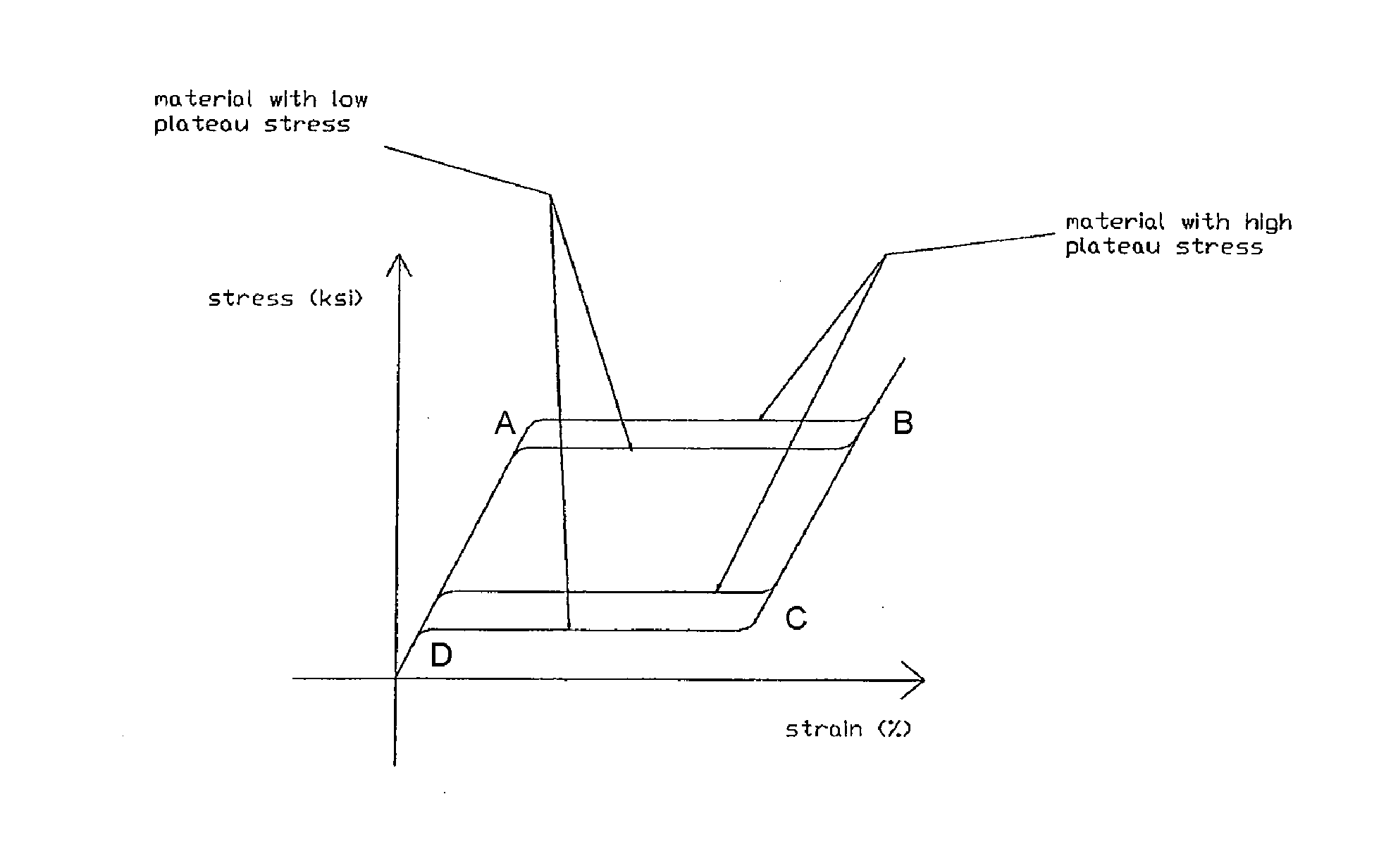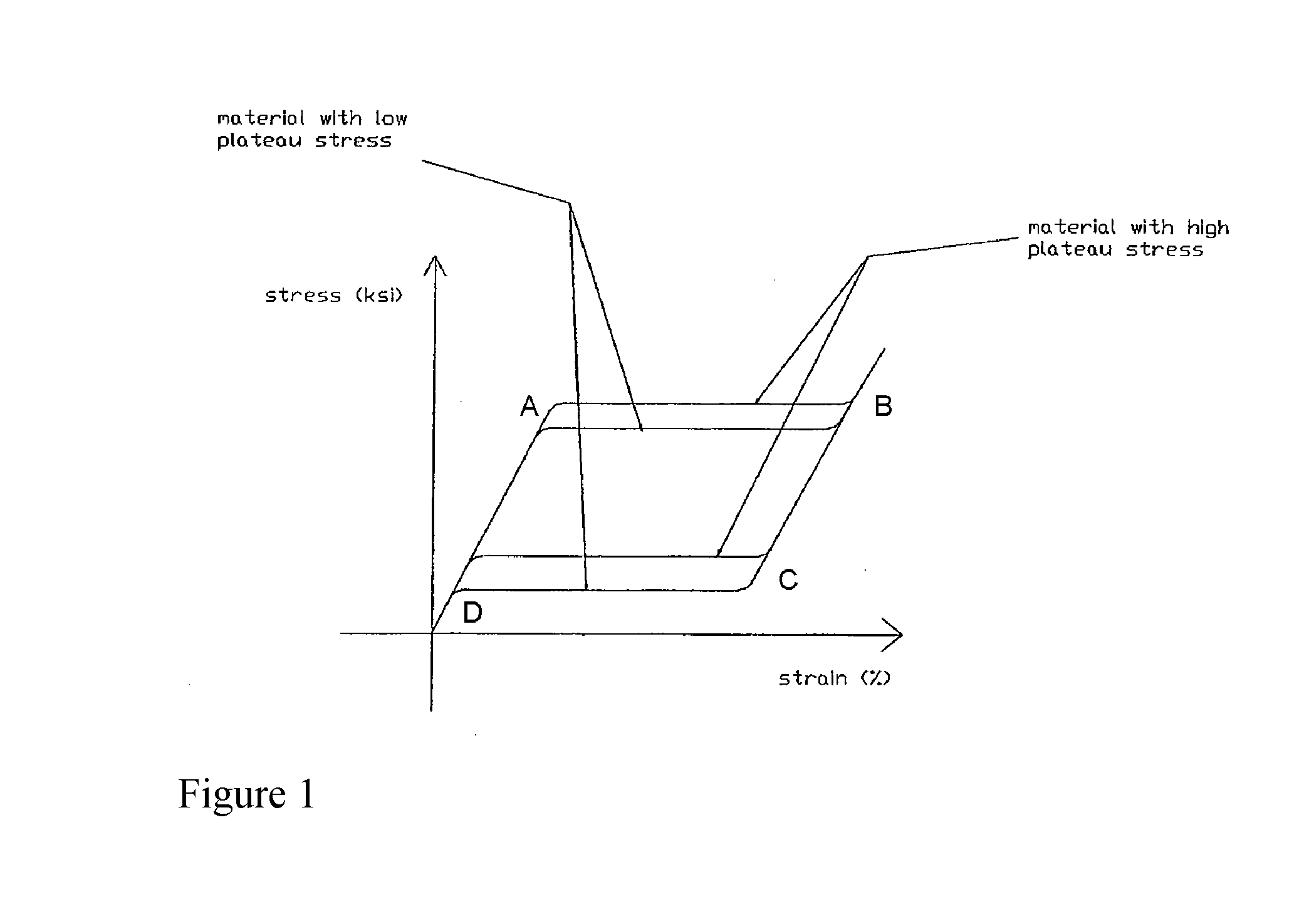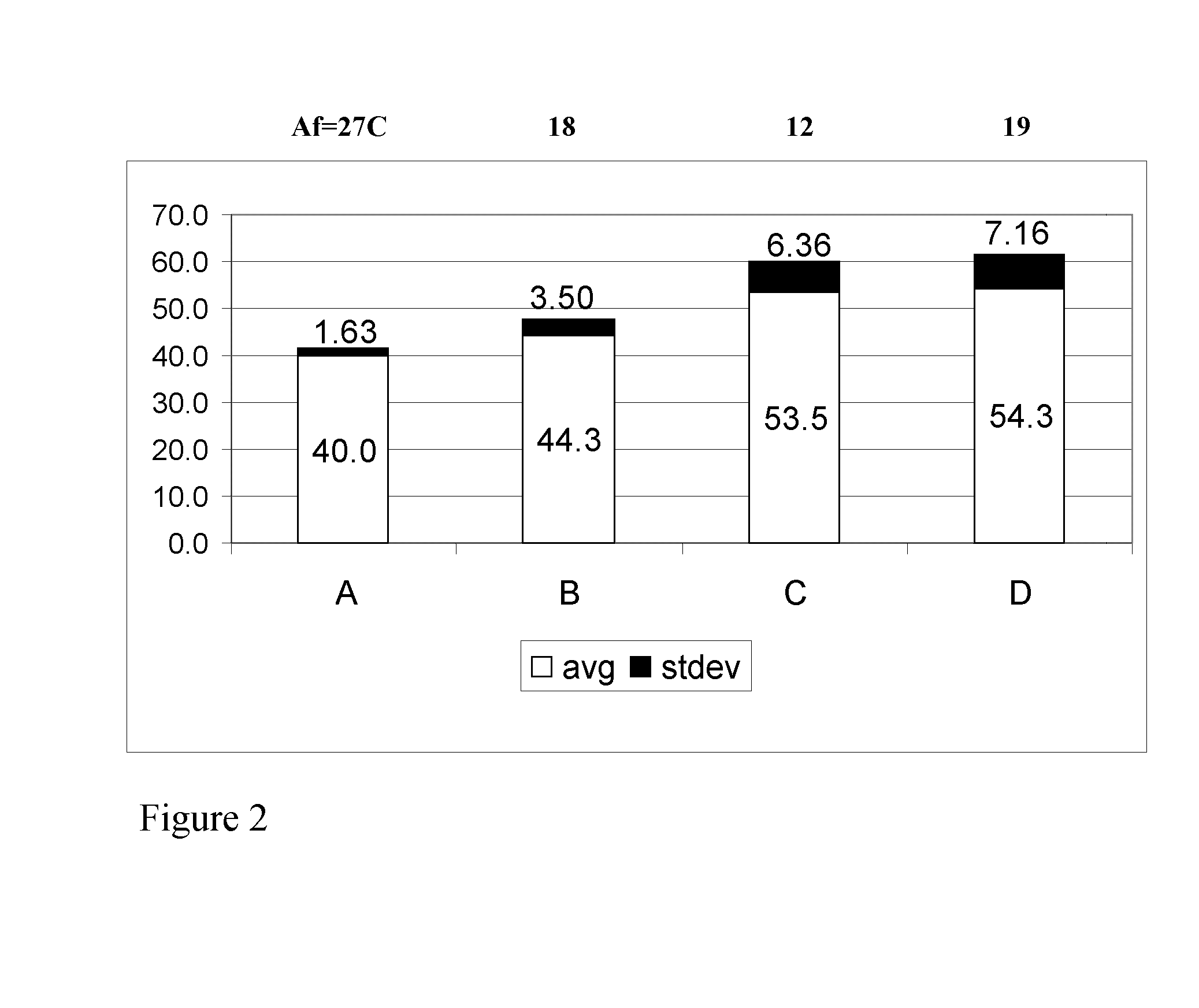Fatigue resistant endoprostheses
- Summary
- Abstract
- Description
- Claims
- Application Information
AI Technical Summary
Benefits of technology
Problems solved by technology
Method used
Image
Examples
example 1
[0065] The autstenitic finish temperature was modulated in accordance with the present invention by heating an endoprosthesis as described in Methods A-D. In Method A, a superelastic tube was heated in a plurality of heating cycles to modulate the austenitic finish temperature by the following: a superelastic tubing having an inner diameter of 2 mm is heat treated at 500 degrees Celsius for 2 minutes and slidably disposed upon a mandrel having a diameter of 3 mm, then the superelastic tubing is quenched in water; the tubing is then heat treated at 500 degrees Celsius for 2 minutes and slidably disposed upon a mandrel having a diameter of 4 mm, then the superelastic tubing is quenched in water; the tubing is then heat treated at 500 degrees Celsius for 2 minutes and slidably disposed upon a mandrel having a diameter of 5 mm, then the superelastic tubing is quenched in water; and the tubing is then heat treated at 500 degrees Celsius for 4 minutes and slidably disposed upon a mandrel ...
example 2
[0070] In one embodiment, superelastic tubing is heat set and then subjected to an additional heat treatment for a duration ranging from 1 minute to 15 minutes and temperatures ranging from 350 degrees Celsius to 550 degrees Celsius. The resulting changes in austenitic finish temperatures of the superelastic tubing are compiled and depicted in Table 2.
TABLE 2Time ofChange in AfChange in AfChange in AfChange in AfChange in Afadditional(in Celsius)(in Celsius)(in Celsius)(in Celsius)(in Celsius)heatafterafterafterafteraftertreatmentadditionaladditionaladditionaladditionaladditionalafter heatheat treatmentheat treatmentheat treatmentheat treatmentheat treatmentsetat 350 Celsiusat 400 Celsiusat 450 Celsiusat 500 Celsiusat 550 Celsius 1 min.−2−1, 1, 6−12, 7 5 min.−22, 6.8, 7.7,1, 4.57.3, 7.1, 3.610 min.−3, −3.4, −3.1,9, 4.9, 16,3, 12.9−2.4, 2, 2.5, −3.115.8, 14.83.1, −2.8, −2.3,−215 min. 66.75, 15.7, 12.28, −0.6
PUM
| Property | Measurement | Unit |
|---|---|---|
| Temperature | aaaaa | aaaaa |
| Temperature | aaaaa | aaaaa |
| Temperature | aaaaa | aaaaa |
Abstract
Description
Claims
Application Information
 Login to View More
Login to View More - R&D
- Intellectual Property
- Life Sciences
- Materials
- Tech Scout
- Unparalleled Data Quality
- Higher Quality Content
- 60% Fewer Hallucinations
Browse by: Latest US Patents, China's latest patents, Technical Efficacy Thesaurus, Application Domain, Technology Topic, Popular Technical Reports.
© 2025 PatSnap. All rights reserved.Legal|Privacy policy|Modern Slavery Act Transparency Statement|Sitemap|About US| Contact US: help@patsnap.com



